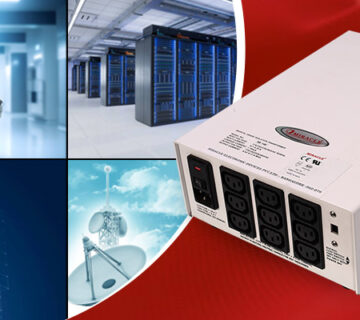Smart transformers are solid state transformers that play a managerial role in the electric distribution grid. They work independently to constantly regulate the voltage while maintaining contact with the smart grid so that information and feedback about the transformer and power supply can be provided even through remote administration. These transformers are designed to provide a voltage optimized power supply to address the energy needs of the facility, which is why large commercial facilities are using these devices more and more today so that they can use power more efficiently and cost-effectively.
Another main advantage of smart transformers is that they respond to fluctuations within the power grid instantly acting as voltage regulators and directly reducing energy consumption to ensure that the optimized voltage is undisturbed. They immediately reduce power consumption by providing a stable and optimal power supply that supplies the electrical equipment with ideal voltage. This benefit has led them to be used in Point of Common Coupling (PCC) in microgrids to act as protecting devices for electrical equipment during power fluctuations.
Smart transformers are intelligent enough to meet the requirements of upcoming power systems, which is why they will be highly popular and in use in the future. However, for now, for any of your transformer requirements, you can get in touch with Miracle Electronics, the leading transformer manufacturer in India, who has a record of providing the best-in-class transformers and other related equipment to customers since over the past two decades.
Usage of smart transformers
This kind of transformer system is designed for applications in rural networks, which consists of a distribution transformer equipped with OLTC for automatic voltage regulation and a communication system. The power line communication channel establishes a path between distant locations where the transformer is installed and the gateway that collects data from another smart transformer installed in the region.
When smart transformers are used at the Point of Common Coupling (PCC), they control the active power exchanged between the microgrid and utility grid, depending on the state of both networks and other information communicated to the smart transformers. They prove to be powerful components that provide faster and superior voltage regulation, frequency regulation, and regulation of the harmonic behaviour of each feeder.
Once the smart transformers are chosen for use, the next step is to choose the power converter cells, which are the basic blocks of these transformers. These cells provide for reducing the core size, isolating different voltage levels, and minimal loss.
Benefits of smart transformers
After reading the above blog, we can say that smart transformers are superbly designed to monitor and manage power supply during fluctuations and ensure that it is voltage optimized even when new demands are being placed upon it. Other benefits and functions of smart transformers include –
- Protecting the power system from load disturbances by isolating the source from load harmonics, transients and voltage sags.
- Providing unity power factor with sinusoidal currents under non-linear loads.
- Enhancing power quality by summarizing loads to the mains with identical phase current even for unbalanced loads.
- Reducing grid losses and improving power supply reliability.




